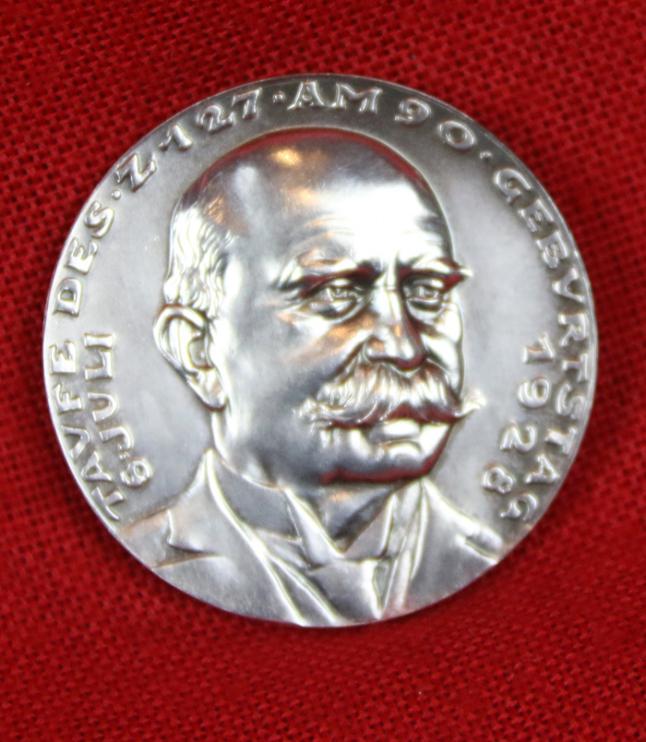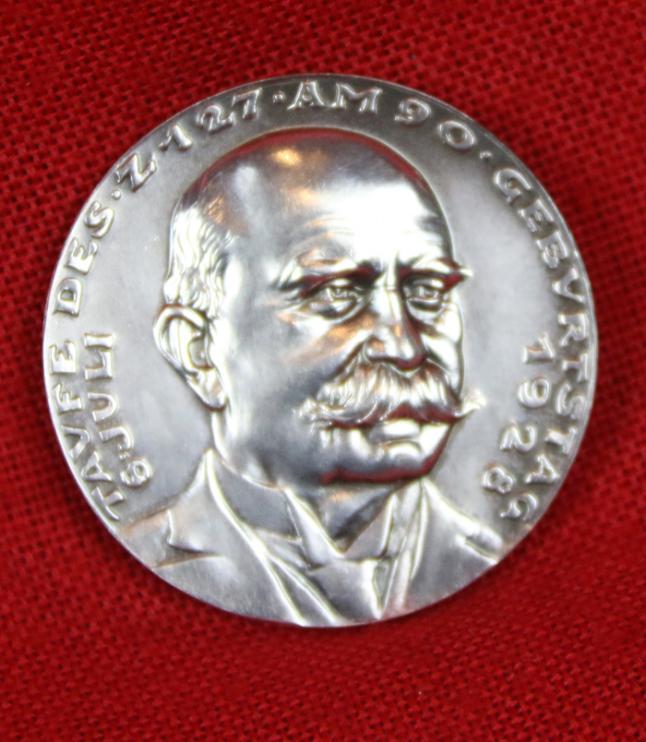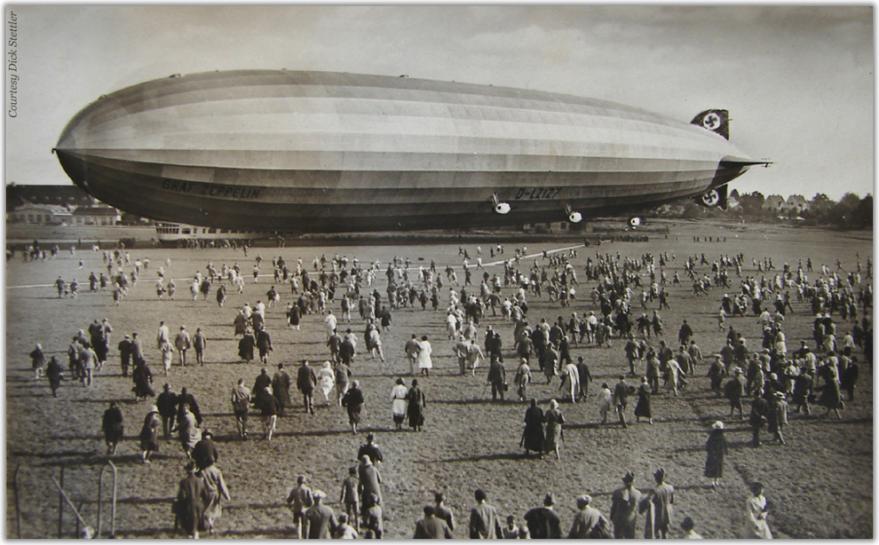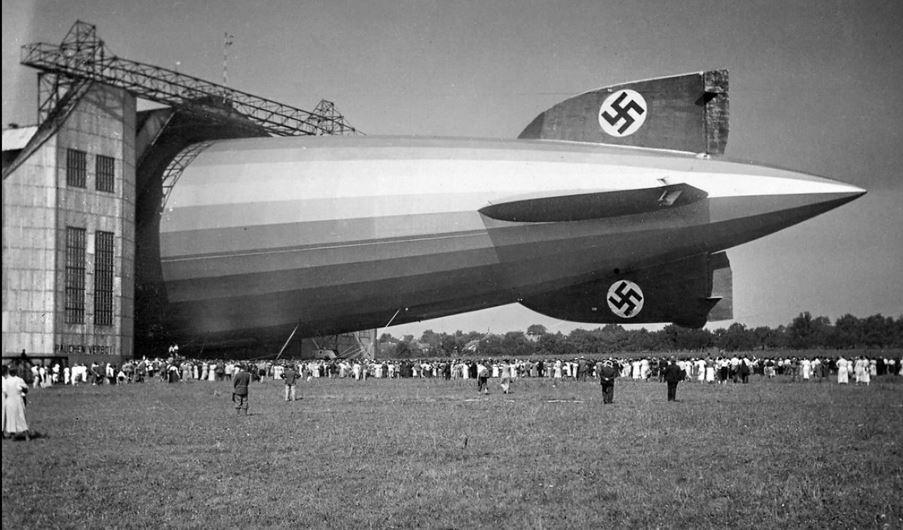Scarce Original Silver Medal for Graf Zeppelin's Launch of the German Airship LZ127 "Graf Zeppelin"
Weimar Republic. Graf Zeppelin launch silver Specimen Medal 1928 SP65 Matte PCGS, Kienast-408. By Karl Goetz. 36mm. TAUFE DES Z127 AM 90. Geburtstag / 8. JULI 1928. Bust facing slightly right, wearing suit / GLÜCK AB GRAF ZEPPELIN. Coat of arms of the noble lineage of Zeppelin, flanked by a boy to left and girl to right each playing with a balloon; in background, zeppelin. On the christening of the airship LZ127 "Graf Zeppelin" on the 90th birthday of Count Ferdinand von Zeppelin (1838-1917). Germany Karl Goetz 1928 Graf Zeppelin silver medal; Kienast reference 408. Nicely toned matte finish with original patina; rare this nice Rare Karl Goetz German airship medal struck in 1928 to mark the christening of the famous airship Graf Zeppelin (D-LZ127), as well as Graf Zeppelin’s birthday; Kienast reference 408. An excellent finish specimen with original light-gray with golden overtones patina; a scarce type. The medal is about 36 mm in diameter; the rim is stamped BAYER HAUPTMUNZAMT FEINSILBER (Bavarian State Mint Fine Silver in German). Early Zeppelin medals are very collectible and highly thought-after by many collectors. A scarce “airship type” medal by the famous German medallist in excellent overall condition; LZ 127 Graf Zeppelin (Deutsches Luftschiff Zeppelin 127) was a German passenger-carrying, hydrogen-filled rigid airship that flew from 1928 to 1937. It offered the first commercial transatlantic passenger flight service. Named after the German airship pioneer Ferdinand von Zeppelin, a count (Graf) in the German nobility, it was conceived and operated by Dr Hugo Eckener, the chairman of Luftschiffbau Zeppelin.
Graf Zeppelin made 590 flights totalling almost 1.7 million kilometres (over 1 million miles). It was operated by a crew of 36, and could carry 24 passengers. It was the longest and largest airship in the world when it was built. It made the first circumnavigation of the world by airship, and the first nonstop crossing of the Pacific Ocean by air; its range was enhanced by its use of Blau gas as a fuel. It was built using funds raised by public subscription and from the German government, and its operating costs were offset by the sale of special postage stamps to collectors, the support of the newspaper magnate William Randolph Hearst, and cargo and passenger receipts.
After several long flights between 1928 and 1932, including one to the Arctic, Graf Zeppelin provided a commercial passenger and mail service between Germany and Brazil for five years. When the Nazi Party came to power, they used it as a propaganda tool. It was withdrawn from service after the Hindenburg disaster in 1937, and scrapped for military aircraft production in 1940.
Code: 23636
685.00 GBP







